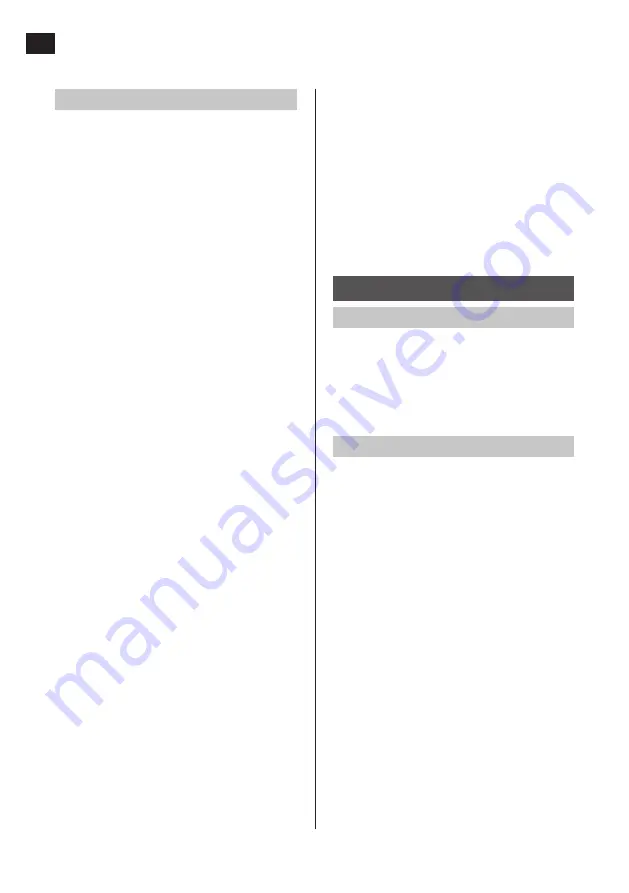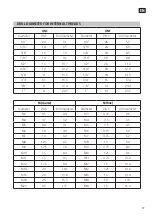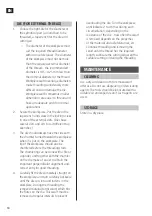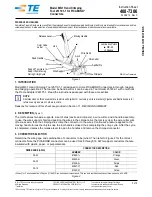
EN
18
overloading the die. Turn the workpiece
anticlockwise 2 to 4 times during each
circumvolution, depending on the
resistance of the die – how often the swarf
is removed depends on the properties
of the material and axle tolerances, etc.
Continue threading and removing the
swarf until the thread has the required
length. Lubricate the cutting edges with a
suitable cutting oil during the threading.
MAINTENANCE
CLEANING
Use a dry and clean cloth to remove swarf
after use. Do not use degreasing or dessicating
agents. The tools should be lubricated with a
suitable oil and wiped clean if such agents are
used.
STORAGE
Store in a dry place.
DIE (FOR EXTERNAL THREAD)
1. Choose the right die for the diameter of
the cylindrical part (a round bar) to be
threaded, a tap wrench for the die and
cutting oil.
– The diameter of the workpiece must
suit the required thread diameter
within close tolerances. The diameter
of the workpiece must not be more
than the required external diameter
of the thread – the recommended
diameter is 0.15–0.25 mm less than
the nominal diameter of the thread.
Workpieces with overlarge diameters
make threading considerably more
difficult and can damage the die.
Workpieces with somewhat smaller
dimensions are easier to thread and
have an adequate pitch for normal
applications.
2. Secure the workpiece. Put the die in the
tap wrench and screw in the locking screw
in one of the external slots. (Dies have
several slots and slits to suit different tap
wrenches.)
3. The die should always have the side with
the chamfer turned towards the workpiece
when it is put on the workpiece. The
tip of the workpiece should also be
chamfered before the threading starts.
The chamfering can be done with a file or
a grinder, and together with the chamfer
on the die makes it easier to obtain the
important perpendicular alignment and
correct entry for good threading.
4. Carefully fit the die completely straight on
the workpiece and turn carefully clockwise
until the die cuts into and fastens in the
workpiece. During the threading the
removed material forms swarf, which fills
the flutes on the die. This swarf must be
removed at regular intervals to prevent

































